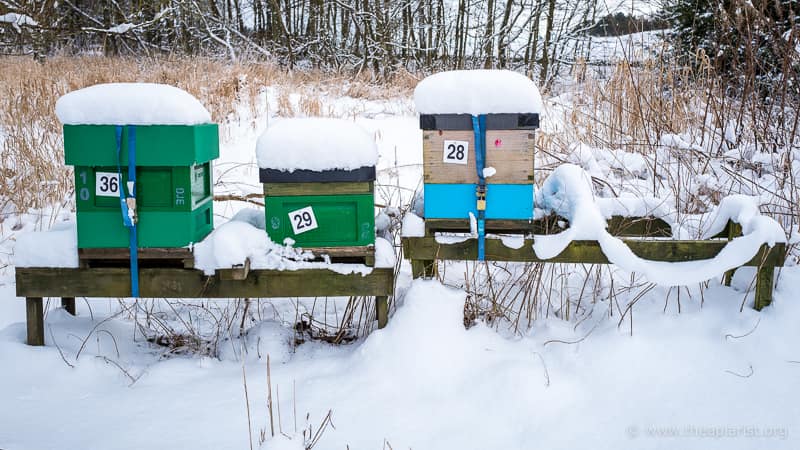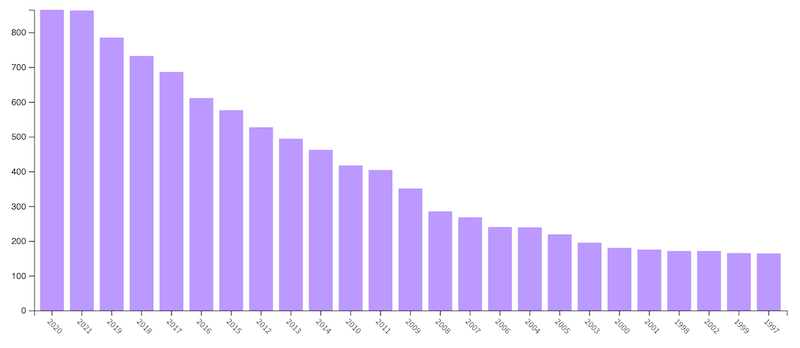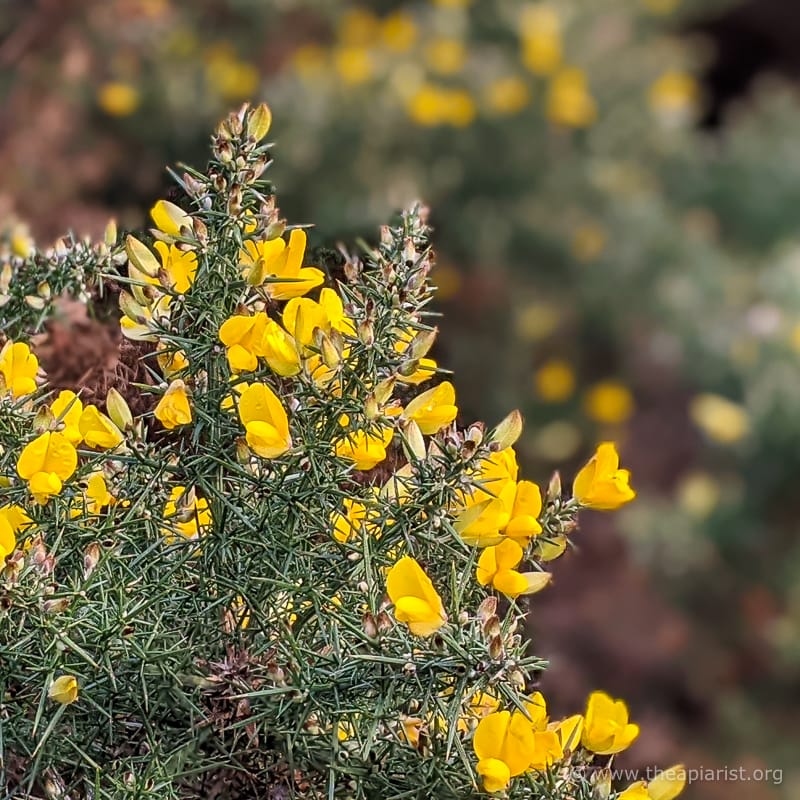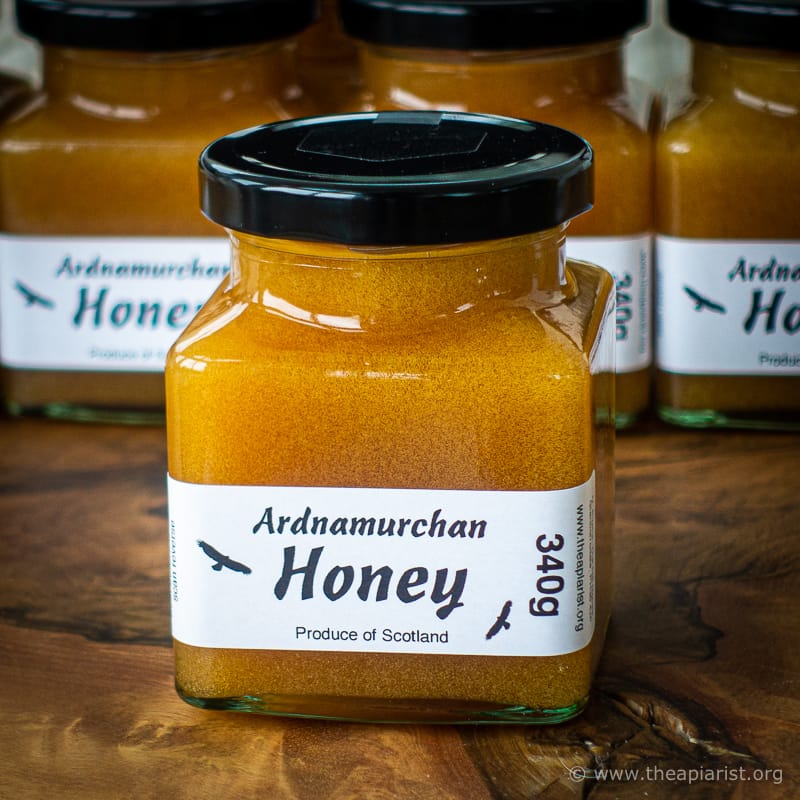Scores on the doors
Conveniently, this final post of the year will be published on the final day of the year. This is an appropriate time to look back over the what’s happened here on The Apiarist … a sort of behind the scenes view of the posts that were popular, the posts that were unloved and the creative writing process that converts a title and a topic on a Tuesday to a perfectly honed essay garbled jumble of words on a Friday.
Precisely because the final post of the year appears on the last day of the year, any stats I mention below will exclude this post. Should 15,000 people read this post late on New Year’s Eve {{1}} then this page would also make it into the ‘Top of the Posts’ lists.
And, in between some of the numbers and comments below there’s likely to be a smattering of beekeeping advice or unanswered questions, just to keep you on your toes.
So … without further ado.
Read all about it
Page views, visitor numbers, those registered for email notifications etc. are all higher this year than last, by ~30%.

Going up … page views and visitor numbers graph since time began
New posts appear on Friday afternoon around 3 pm {{2}} and tend to get the most views on Friday evening and over the weekend, tailing off through the remainder of the week.
Some posts are then rarely read again. Others go from strength to strength, attracting readers in successive months and years. This longevity depends upon a combination of subject matter and ‘fit’ with current search engine algorithms.

Regular as clockwork
Inevitably, the popular posts are often those on ‘how to’ subjects. Perhaps unsurprisingly, considering this is a beekeeping site, the top posts of the year were all on either swarm control or Varroa management.
Top of the posts
These were the most read posts of the year. Tellingly, only the one in bold first appeared this year:
- Queen cells … don’t panic! – a title designed to attract the beginner who, having discovered their first queen cells, is now busy panicking.
- The nucleus method – my favoured method of swarm control. Almost idiot proof, this explains why it’s my favoured method of swarm control.
- Demaree swarm control – a little bit of history and another swarm control method. What’s not to like?
- When to treat – a post that first appeared almost 5 years ago. Most of the relevant information is now included in other posts, or summarised in the more recent – and therefore recommended – Rational Varroa control.
- Vertical splits and making increase – another ageing post that, by combining swarm control, making increase, requeening and running out of equipment, has something for everyone. I think this could do with updating and deconvoluting.
- Swarm control and elusive queens – a useful method for those who struggle to find queens. More important still is that, for beginners, if they understand WHY it works then they’re well on their way to becoming a beekeeper.
- Honey pricing – higher, higher! There’s loads of cheap ‘honey’ flooding the market. You are not competing with it. You have a premium product. Do NOT sell your honey cheaply.
- Swarm prevention – something that should have been read before items 1, 2, 3, 5 and 6 in this list … but possibly wasn’t considering it was read fewer times 🙁 {{3}}
- Pagden’s artificial swarm – the most popular method used by beekeeping associations to completely confuse beginners (see the nucleus method above for an alternative).
- Oxalic acid (Api Bioxal) preparation – which is currently the most read post, proving conclusively to me that many more beekeepers need to read Rational Varroa control because many colonies will now be rearing brood (see the photo below).
Together, these 10 posts counted for about 20% of the total traffic this year. The remainder were smeared over the other 448 posts that have appeared since early 2013.

Biscuit-coloured crumbs on the Varroa tray = brood rearing. 23rd December 2021, Ardnamurchan, Scotland
If you’ve got some spare time, show some love for Seasonal changes which only received a single visitor this year. The late September 2016 post contains a nice picture of an orchid and a bottle of honey beer.
Search and ye shall find
The majority of visitors arrive either in response to the weekly emails announcing new posts {{4}} or from search engine searches. The latter are nominally a valuable resource, so are not disclosed to those of us who actually write the stuff in the first place (unless we pay Google).
However, the 0.5% of searches that come from other search engines turn up a few interesting terms (my selection from hundreds, and in no particular order):
- cbpv winter – not usually associated together as this is a virus (chronic bee paralysis virus) that usually damages very strong, crowded hives in the middle of the season.
- diy Kenyan beehive – not something I’ve ever discussed {{5}} or know anything about {{6}}.
- how much income from beekeeping – just a bit less than not enough, but fractionally more than SFA.
- pointers to successful queen introduction (2006) bickerstaffes honey – a really rather specific search. I wonder whether this site was any help?
- bee hive in old norse – see ‘diy Kenyan beehives’ above, the same sentiments apply.
- Как сделать станок для натягивания проволоки на рамки для ульев чертежи – that’s easy … you need one of these.
- maldives beekeeper – I have one photo on the site from the Maldives which I suspect resulted in this ‘hit’. I hope the reader wasn’t disappointed {{7}}.
- does a virus make bees angry – actually not such a daft question. There’s a Japanese strain of Deformed wing virus called Kakugo which is supposed to cause aggression. Kakugo means readiness or preparedness.
And, of crsuoe, there wree hrdudens of saehrces wtih snlpileg errors. Mabye smoe brepkeeees olny serach for initofrmaon atfer benig stnug rltedepaey on tiehr fenirgs? {{8}}
Some of the spelling errors were so gross that the resulting word was barely recognisable.
There were also about 8 different spellings for ‘apiarist’ … not bad for an 8 letter word 😉
Prolixity
Fifty two posts have appeared in 2021, each averaging 2,675 words. This is an increase of about 8% over the 2020 figures {{9}}. In total, excluding the ~1200 comments, that’s about 139,000 words.

Tolstoy’s War and Peace … more words, more characters, less bees
For comparison, this is a bit under 25% the length of War and Peace.
Phew!
Talking the talk
As well as writing too much (it has been said that) I talk too much. During 2021 I’ve given 25 talks to beekeeping associations stretching from Cornwall to Inverness {{10}}. Audiences have ranged from about 15 to 350 and I’m very grateful to all the BKA’s who hosted me and coordinated the Q&A sessions.
Particular thanks to the associations that managed to send me the Zoom link for my presentation before the talk was supposed to start 😉 .
Although the talks were all ‘virtual’ it was good to see some old friends and to make new contacts.
Spam, spam, spam
Of the ~1200 comments I mentioned above, many are from me. I try to respond to every comment, irrespective of whether they are corrections (for which many thanks), additional insights (thanks again) or further questions {{11}}.
Running a website, even a relatively low traffic one such as this, means you receive a lot of spam. ‘A lot’ means usually between 200 and 800 comments or emails a day. To avoid the comments section getting tainted with adverts for fake sunglasses or dodgy prescription drugs {{12}} I manually ‘approve’ every comment that appears.

Spam
This isn’t as onerous as it sounds. I run spam filters that trap the vast majority of the unwanted spam.
This filtering is not 100% accurate … if you previously posted a comment and it never appeared then it may have fallen foul of these filters. Next time avoid mentioning that you were wearing Ray-Ban sunglasses when you inspected the colony 😉
It’s a rather sad indictment of the internet that I sometimes receive the same amount of spam in one day as I receive in valid comments in one year 🙁
You’ve got mail
The comments and questions – whether to posts or talks – are often very interesting. After all, I may have delivered the same talk three times in the last month, but the questions will always be different. I’ve touched on this previously in Questions & Answers.
Some questions are direct, relevant and on-topic. These are usually easy to understand and answer, though they may not be easy to answer correctly.
But there two other types of question:
- Rambling, incoherent and vague … almost always lacking some essential information, like location. These often start with a detailed description of the last three colony inspections and end with something about Nosema or polycarbonate crownboards. There may not even be a question mark …
- Direct – verging on blunt – and totally off-topic. It’s not unusual to prepare 2,500 carefully crafted {{13}} words on rational Varroa control to then receive the question ”What is the recipe for thick syrup?”.
In addition to comments/questions to posts and talks I receive a lot of email. If you emailed me this year and I failed to answer promptly then it’s probably because there were 50 other unanswered emails I’d yet to wade through.
With the volume becoming unmanageable I’ve started ignoring the very terse emails requesting a quick response (because the sender is ‘busy’ and wants the answer before they leave for the apiary/office/school run/anger management class) like “What is the recipe for thick syrup”.
The few who send adverts for their quack solutions to Varroa (often vaguely disguised as informed questions) or abuse – you’d be surprised, I was – are both ignored and blocked.
Life is too short …
New topics and old chestnuts
Beekeeping is a fantastically diverse activity {{14}}. From the single hive owner to huge commercial operations, from the hive-monitoring techno-geeks to the leave-alone organic types, from honey to venom … there really is something for everyone.
It’s therefore no surprise that there is never a shortage of topics to cover. This is particularly true when you also include some of the wonderful {{15}} science of honey bees.
I’ve covered some beekeeping topics exhaustively and get little satisfaction from re-writing the same thing differently {{16}}. However, these are the topics that often attract the most readers – presumably many of whom are new beekeepers.
I’m not too fussed about the reader numbers, but if I’m going to go to the trouble of writing something I do want it to be read {{17}}.
I’m currently wondering about how to achieve a balance between what might be considered the ‘basics’ and some of the more advanced – and to me (after a lot of beekeeping) much more interesting – topics.
And I’m always happy to consider new topics if you think I’ve missed something {{18}}.
The writing process
I usually accumulate ideas on long car journeys, while walking in the hills, out on the loch or during interminable meetings. They might start as little more than a title and a reference, or a sentence of text.
I rarely have anything actually written by the weekend before the post appears, though I will usually have decided on the topic.
This post is being written on a Tuesday, but late – often very late – on a Thursday is more typical.
Two to four hours is usually sufficient for most posts, though additional time is needed if there are custom figures or graphs.
It’s very useful to then leave the draft for a few hours after ‘finishing’ it.
I usually abandon the keyboard by 2 am on Friday and look again first thing the following morning. Typos are caught, my awful punctuation is largely fixed and some of the more garbled sentences are rewritten in English {{19}}.
And then I press ‘Submit’.
Flat white, cappuccino, ristretto, latte macchiato and affogato
And all of those activities – the thinking, the writing and the proof-reading – are fuelled by a delicious and fulfilling combination of strong coffee and pizza.
I’d therefore like to again thank the supporters who have ‘Bought Me a Coffee’ during 2021. In particular I’d like to acknowledge the repeat supporters. In addition to facilitating my nocturnal writing marathons, this support has also enabled moving the site to a more powerful (and properly backed up and appreciably more expensive) server.
Thank you
The future
I’m looking forward to the year ahead for many reasons. I expect {{20}} to have a lot more time for my bees and beekeeping. In the meantime, I’ll probably write about some of my immediate plans in the next week or two.
The size and complexity of this website – hundreds of posts and thousands of images – is starting to make it both difficult and time-consuming to maintain. It’s a dynamic site, the pages being generated on the fly when your web browser requests them. There’s a significant performance cost to retaining these dynamic features, and the underlying software is bloated and a target for hackers.
I’m therefore considering alternatives that make my life a little easier and your browsing experience a little faster. One way to achieve this is to use what is termed a static site. Anyone who has looked up details of my online talks (which has ~16 images and ~2500 words, so broadly comparable to a Friday post) will have used one of these. This technology is becoming increasingly common for blogs. I still need to resolve how to retain the comments/discussion features.
I’m also keen to explore some more expansive topics.
Even ~2500 (or more) words is insufficient to do some subjects justice; the impact of honey bees/beekeeping on solitary bees and other pollinators, neonicotinoids, fake honey, the prospects for Varroa-resistant bees, more advanced methods of queen rearing etc.
How do I tackle these?
Should I write less and not explore the subject fully?
Write in instalments?
Or just not bother?
What do you think?
And while you ponder that and some of the other points raised above I’m going to enjoy the last few hours of 2021 and close by wishing all readers of, and contributors to, this site the Very Best for 2022.
May your supers be heavy, your queens fecund, your bees well-tempered and your swarms … from someone else 😉
Happy New Year
Notes
The phrase [the] Scores on the doors originated from the panel show The Generation Game hosted by Larry Grayson between 1978 and 1982. However, it was subsequently appropriated to indicate the public display of food hygiene ratings.
If you arrived here from @Twitter then you might be wondering what omphaloskepsis is. It means navel-gazing as an aid to meditation. Readers with a classical education will recognise its derivation from the Ancient Greek for navel and contemplation. Scrabble players will be disappointed it doesn’t contain more high scoring consonants.
{{1}}: After all, what else is there to do?
{{2}}: They are automagically posted … I don’t sit around with my finger hovering over the SUBMIT button.
{{3}}: Or, of course, what I suggest doesn’t work at all …
{{4}}: Thank you to those who have already registered. New registrations can be made using the subscribe button about half way down the sidebar. The only emails you will receive after verifying your email address are new post announcements.
{{5}}: Hmmm … an unmet need?
{{6}}: Hmmm … perhaps not.
{{7}}: The visitor count from the Maldives was ranked 110 of the 202 originating countries so perhaps they visited several times.
{{8}}: This scrambled text generated with the Can your read this? Generator. The ability to read this type of jumbled text is because of the way we read words, with the first and last letters being the most important for recognition. For further details of this interesting psycholinguistic observation see this post by Matt Davis … note the self-referential typo in the web address.
{{9}}: Which was already too much.
{{10}}: I only talk January to March and September to December, so this works out at about one talk a week.
{{11}}: See below
{{12}}: And a whole lot of far less savoury things that have no place on a family website.
{{13}}: You should see the stuff I discard before posting.
{{14}}: So much more than honey is the sub-title of this site.
{{15}}: And, at times, not so wonderful.
{{16}}: How many different ways are there to say treat with oxalic acid when the colony is broodless? If you’ve yet to treat then get a move on … your colonies will be rearing brood very soon if they’re not doing so already. See the photo further up the page.
{{17}}: A lot … despite not being too fussed about reader numbers.
{{18}}: Just don’t expect me to cover it the week after you suggest it.
{{19}}: Or what approximates for English …
{{20}}: Which is a lot more definite than hope.





Join the discussion ...